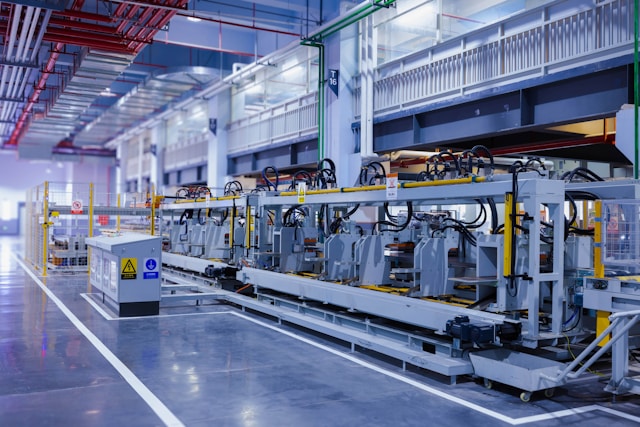Eli Lilly & Co (LLY): Technical Analysis
$952.79
Eli Lilly & Co (LLY): Technical Analysis
05 Nov 2025, 17:14


U.S. manufacturing saw a notable improvement in November, with new orders rising for the first time in eight months and input prices declining. According to the latest Institute for Supply Management (ISM) report, the Manufacturing Purchasing Managers' Index (PMI) increased to 48.4 in November, up from 46.5 in October. While still below the 50 threshold, which indicates contraction, this marks a positive shift from the previous month's downturn, which was the lowest level since July 2023.
The increase in the Manufacturing PMI suggests a general improvement in business sentiment, fueled by expectations of more pro-business policies under President-elect Donald Trump. Economists had predicted a smaller PMI increase, forecasting 47.5, but the actual rise points to signs of stability in the manufacturing sector, which contributes about 10% of the U.S. economy. Despite this, the PMI remained below 50, signaling that the sector is still in contraction but well above the 42.5 level that typically indicates overall economic expansion.
A key forward-looking indicator, the new orders index, jumped to 50.4 in November, marking the first time it has been above 50 since March. This is a strong signal of renewed demand, as the index rose from 47.1 in October. While the production index remains weak, the drop in prices paid by manufacturers to 50.3, down from 54.8 in October, suggests that input costs could continue to decline. However, concerns remain that potential tariffs under the new administration could reverse this downward trend.
The supplier deliveries index fell to 48.7 from 52.0, indicating faster delivery times, a positive sign for manufacturers seeking to overcome supply chain bottlenecks. Factory employment improved slightly, with the employment index rising to 48.1 from 44.4 in October. While still low, this improvement points to potential growth in nonfarm payrolls in November, especially after the disruptions caused by strikes and hurricanes in October.
The manufacturing sector continues to grapple with the effects of Federal Reserve interest rate hikes in 2022 and 2023, which were implemented to control inflation. These rate increases have slowed growth in the sector. However, recent signs of recovery are emerging, with business investment in equipment showing growth for two consecutive quarters, driven in part by the AI boom and rising demand for commercial aircraft. Additionally, the Federal Reserve began easing its monetary policy in September, with another rate cut expected soon.
In late October and early November, 38,000 aerospace workers returned to their jobs following strikes, contributing to an expected increase in November payrolls. According to early estimates from Reuters, payrolls are expected to rise by 195,000 in November, a significant rebound from just 12,000 new jobs in October, which marked the lowest job growth since December 2020. The official November employment report is set to be released on Friday.
Source: Reuters.com